Winter Batards
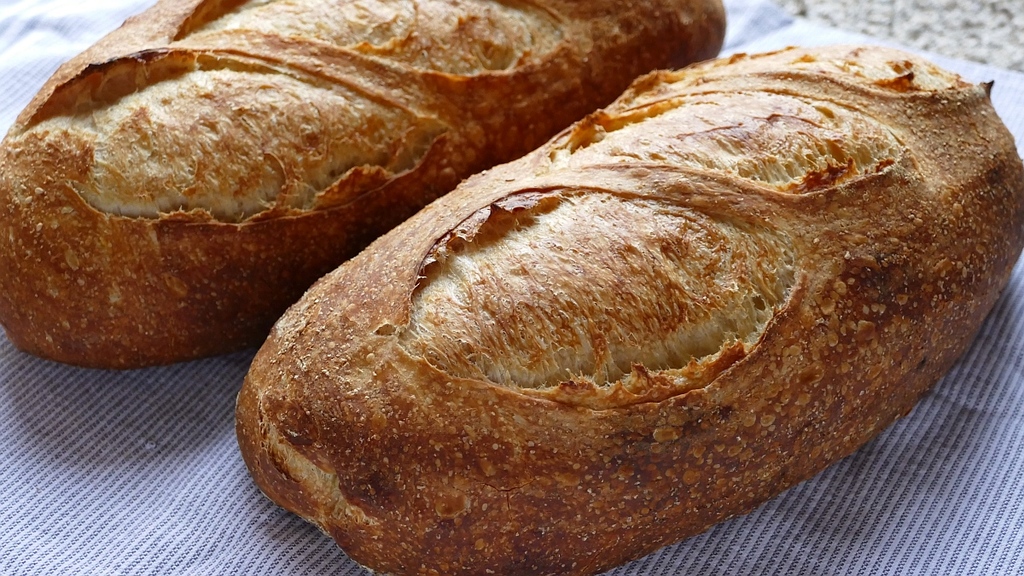
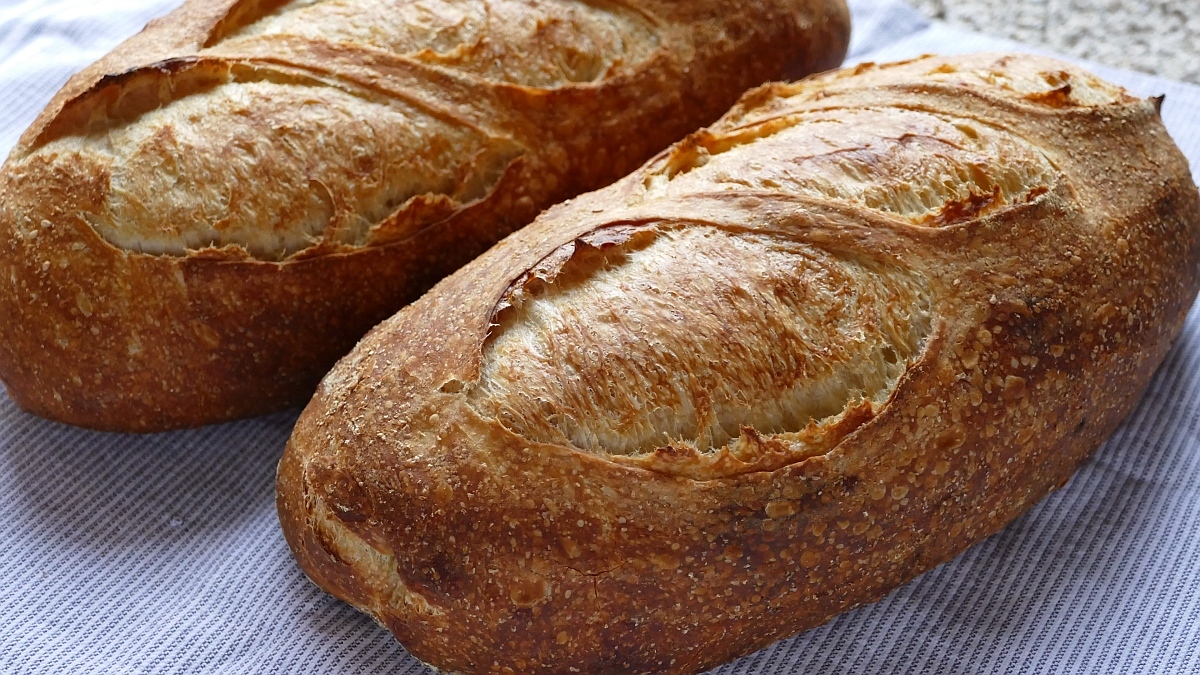
In the late afternoon (3:30 pm), Mix all ingredients in the order given and place dough in a covered dough trough or covered bowl. Dough temperature = 76F/24C
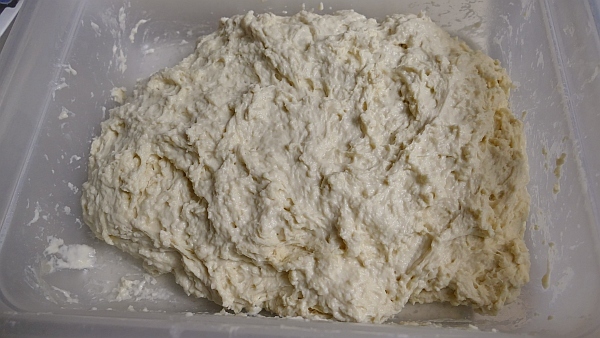
After the dough has rested two hours, fold the dough (around 5:30 pm). After an additional two hours fold the dough again (around 7:30 pm).
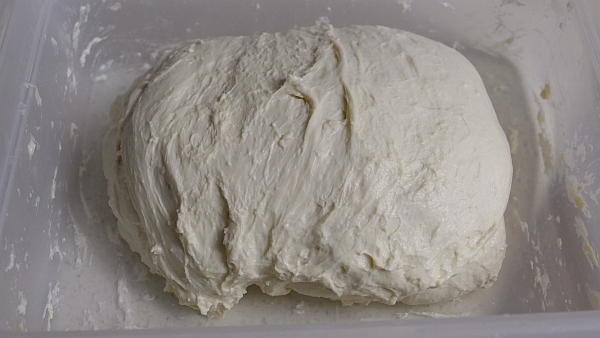
At 9:30 pm fold the dough once more then cover the dough and refrigerate overnight for 10-12 hours. Note: If your dough is done bulk fermenting earlier than the six hours given here, then go ahead and refrigerate then.
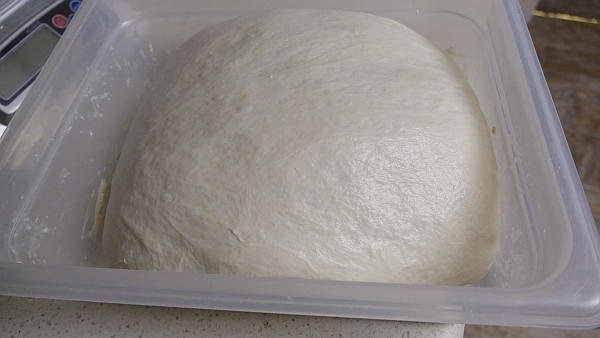
Next morning turn the dough out onto your work surface.
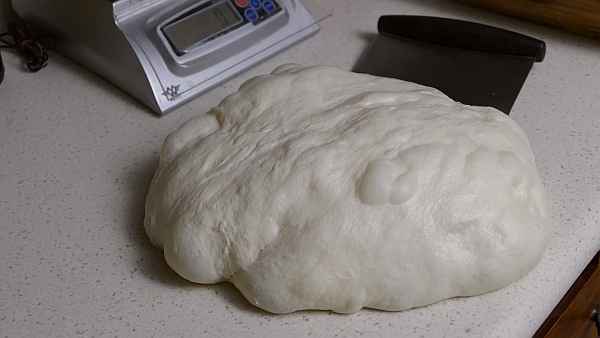
Divide into two pieces around 950 grams each (you might have a little less if you had dough stuck to your hands each time you folded).
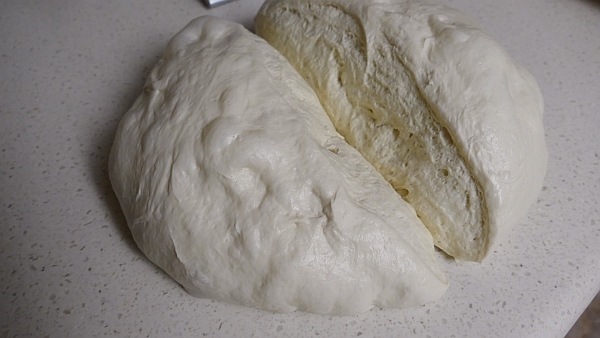
Do a pre-shaping of the two batards and then let them bench rest for 30 minutes.
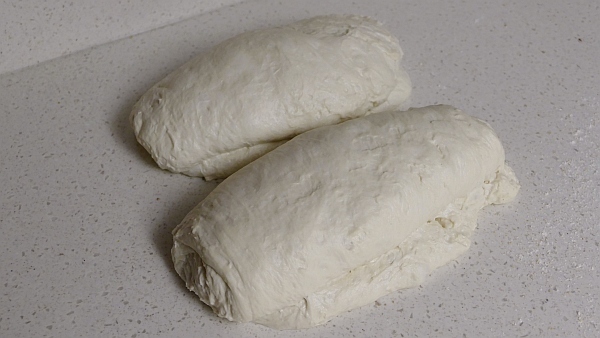
Stagger the final shaping by 30 minutes (Final shape one loaf, then come back and final shape the second loaf 30 minutes later). Place in floured bannetons and let proof until ready. My loaves took 3 hours.
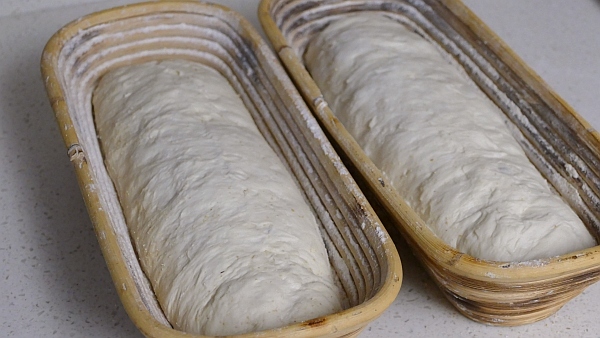
Make sure your oven/stone or Dutch Oven is pre-heated well ( I pre-heat at least an hour) at 480F/248C. Then score your loaf, place on hot baking stone and cover with a lid to steam for 16 minutes.
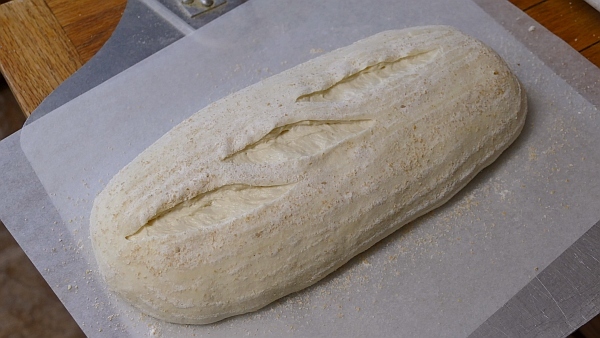
After the first 16 minutes, remove the lid and continue to bake for an additional 20-25 minutes or until the loaf interior has reached 210F/98C. Make sure the crust is nice and brown. Remove from oven to a cooling rack and then let your oven pre-heat again for about 6-8 minutes. Then bake your second loaf.
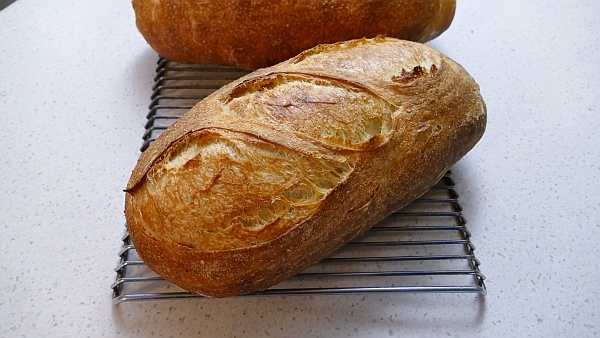
Cool both loaves completely before slicing.
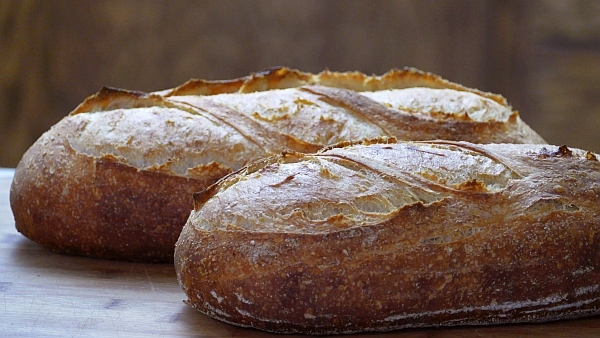
I like to use one loaf fresh and freeze the second loaf (or give it away). Make sure the loaf is completely cooled before freezing (wrap well). You should have a nice open crumb loaf with a soft interior and a crispy crust.
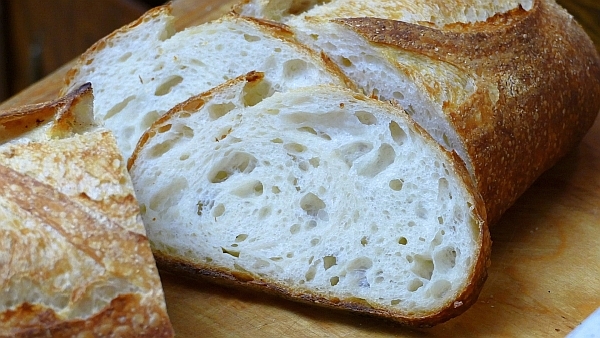
Ingredients
Directions
In the late afternoon (3:30 pm), Mix all ingredients in the order given and place dough in a covered dough trough or covered bowl. Dough temperature = 76F/24C

After the dough has rested two hours, fold the dough (around 5:30 pm). After an additional two hours fold the dough again (around 7:30 pm).

At 9:30 pm fold the dough once more then cover the dough and refrigerate overnight for 10-12 hours. Note: If your dough is done bulk fermenting earlier than the six hours given here, then go ahead and refrigerate then.

Next morning turn the dough out onto your work surface.

Divide into two pieces around 950 grams each (you might have a little less if you had dough stuck to your hands each time you folded).

Do a pre-shaping of the two batards and then let them bench rest for 30 minutes.

Stagger the final shaping by 30 minutes (Final shape one loaf, then come back and final shape the second loaf 30 minutes later). Place in floured bannetons and let proof until ready. My loaves took 3 hours.

Make sure your oven/stone or Dutch Oven is pre-heated well ( I pre-heat at least an hour) at 480F/248C. Then score your loaf, place on hot baking stone and cover with a lid to steam for 16 minutes.

After the first 16 minutes, remove the lid and continue to bake for an additional 20-25 minutes or until the loaf interior has reached 210F/98C. Make sure the crust is nice and brown. Remove from oven to a cooling rack and then let your oven pre-heat again for about 6-8 minutes. Then bake your second loaf.

Cool both loaves completely before slicing.

I like to use one loaf fresh and freeze the second loaf (or give it away). Make sure the loaf is completely cooled before freezing (wrap well). You should have a nice open crumb loaf with a soft interior and a crispy crust.


Hi Teresa, Thanks so much for you reply. I will take all those suggestions into consideration. Much appreciated.
You are welcome! 🙂
I’m wondering about the oven temperature, the recipe did not stipulate lowering the temperature at the various stages of baking. I baked my first loaf at the 480F through the whole bake which resulted in many burned spots on the loaf. Even though I lowered the temperature on the second loaf by 10 degrees in the second half of the bake I still had burnt spots. Could you advise me on the temps. Thank you, Diana
Hi Diana, the oven temperature is only a recommendation. In my older oven, I pre-heated to 500F and then lowered the temp to 450F during the bake. With my newer oven, I find that leaving the temp at 480F for the whole bake works well unless I have milk, sugar, potato water or another ingredient that helps make dough darken quickly.
If you find that the 480F is just too hot, try it at 450F or 460F for the whole bake and see how your bread does. Then after experimenting to find out what your oven is capable of, use that temperature for an average loaf of sourdough.
You can also use an oven thermometer to see if your oven is accurate. At 480F you might find your oven is actually running at 500F.
So remember when you try a new formula, following it exactly the first time is a good idea, then tweak the formula to fit your circumstances. Your oven is different, your flour is different, your water is different. So don’t be afraid to experiment and see what you can do with your equipment.